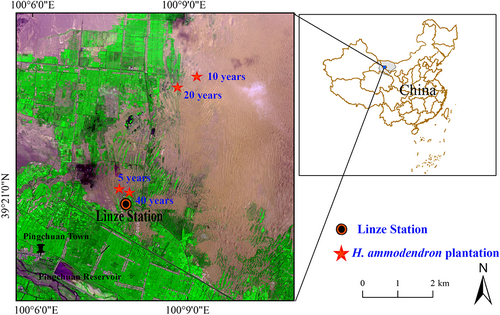Haloxylon ammodendron is a desert shrub used extensively in China for restoring degraded dry lands. An understanding of the water source used by H. ammodendron plantations is critical achieving sustainable vegetation restoration. We measured mortality, shoot size, and rooting depth in 5-, 10-, 20-, and 40-year-old H. ammodendron plantations. Scientists examined stable isotopic ratios of oxygen (δ18O) in precipitation, groundwater, and soil water in different soil layers and seasons, and in plant stem water to determine water sources at different shrub ages. They found that water acquisition patterns in H. ammodendron plantations differed with plantation age and season. Thus, the main water source for 5-year-old shrubs was shallow soil water. Water sources of 10-year-old shrubs shifted depending on the soil water conditions during the season. Although their tap roots could absorb deep soil water, the plantation main water sources were from soil water, and about 50% of water originated from shallow and mid soil. This pattern might occur because main water sources in these plantations were changeable over time. The 20- and 40-year-old shrubs acquired water mainly from permanent groundwater. Scientists conclude that the main water source of a young H. ammodendron plantation was soil water recharged by precipitation. However, when roots reached sufficient depth, water originated mainly from the deep soil water, especially in the dry season. The deeply rooted 20- and 40-year-old shrubs have the ability to exploit a deep and reliable water source. To achieve sustainability in these plantations, scientists recommend a reduction in the initial density of H. ammodendron in the desert-oasis ecotone to decelerate the consumption of shallow soil water during plantation establishment. This research achievement has been published on Hydrological Processes. 
Fig. Location of the study sites in 5-, 10-, 20-, and 40-year-oldHaloxylon ammodendron plantation (Image by ZHAO Wenzhi) |

